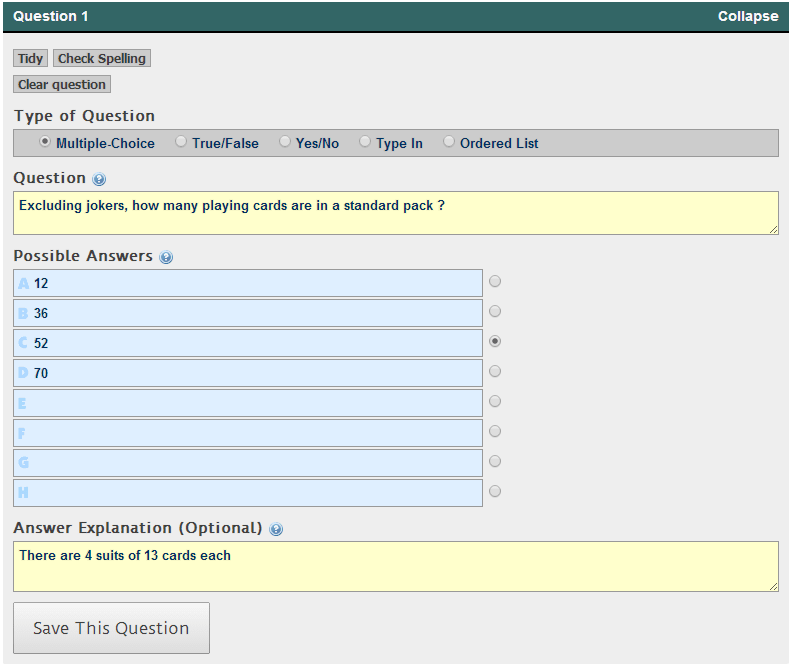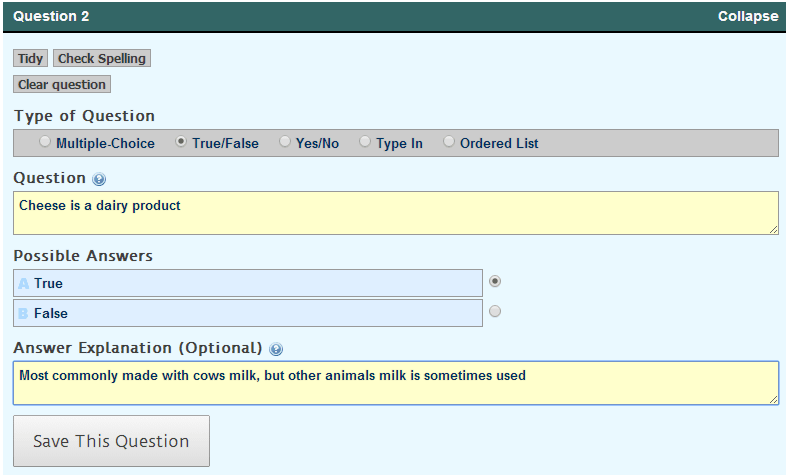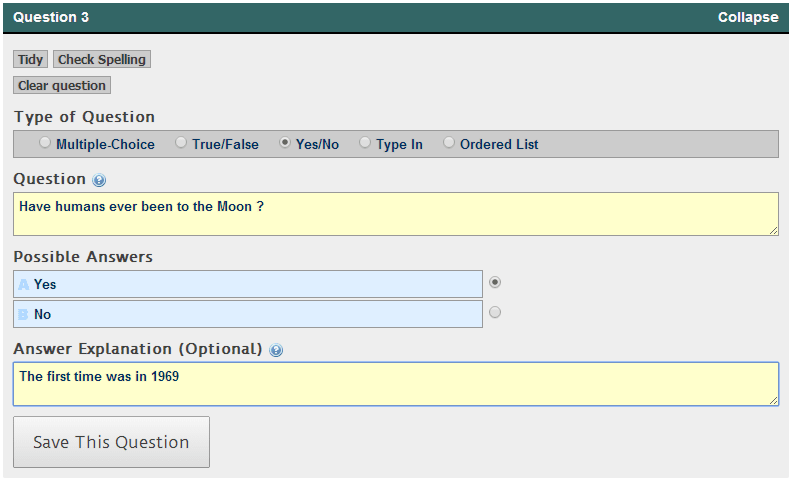Adding Questions
When adding questions to Absurd Trivia, there are five different types of questions you can choose from, the three basic types are "multiple-choice", "true or false" and "yes or no", and the two advanced types are "type in questions" and "ordered lists". We strongly recommend that beginners stick to the basic types, as incorrect use of the advanced types will prevent players from being able to correctly answer your questions.
Before you begin adding questions there are a number of do's and don'ts which should be followed to ensure you produce a high quality quiz which players will be happy to play.
Do- Always use correct capitalisation in your questions and answers.
- Always use correct grammar in your questions and answers.
- Always use correct spelling in your questions and answers.
- Only ever create a question when you are 100% sure of the correct answer.
- Be original with your questions, and try to think of questions which do not appear in other quizzes.
- Type your questions in all capital letters
- Don't use abbreviations or text-speak like 'u' when you mean you, or 'gr8' when you mean great etc.
- Don't create questions where the answer is likely to change in the future.
Creating a multiple choice question
Multiple choice questions are the most common type of question found on Absurd Trivia. The image below shows how a well formatted multiple choice question could be written.

Notice how the question is well formatted and conscise, correctly capitalised and has a question mark on the end.
In this example we have provided four possible answers, you must provide at least three possible answers on a multiple choice question but can supply as many as eight.
In your list of possible answers, one and only one answer must be correct. You define the correct answer by placing a tick in the circle to the right of the correct answer. Notice in our example how the correct answer of '52' is marked.
Finally, you have the optional Answer Explanation, this will only be displayed to the player after they have played the quiz. It is useful to provide extra information on an answer.
Creating a True/False question
True or false questions are created in the same way as multiple choice questions, with a few exceptions. They can only ever contain two possible answers, true or false.

When you choose this type of question, the answers 'True' and 'False' will automatically be inserted. You must still however remember to tick which answer is the correct answer.
Yes or no questions are created in exactly the same way as true or false type questions, except that they will only ever contain yes or no answers.

Notice that in the example above the correct answer was no, so we provided a detailed explanation of why the answer was no and what the correct answer was.
Ordered lists are used when you have a list of answers which you want to player to rearrange into the correct order.

In the example above, we have provided a list of five months, and asked the player to place them in the correct order.
Notice that when we entered the answers they are already in the correct order, the system will jumble the answers up for you before presenting this question to a player.
Logged in players can create a quiz
and have their scores saved